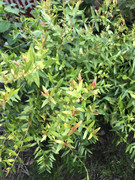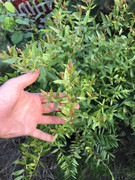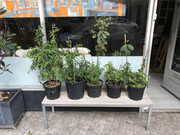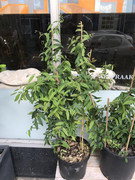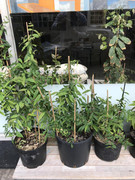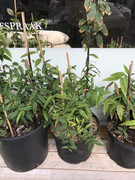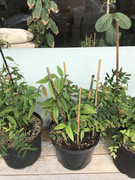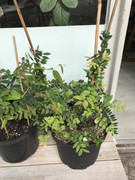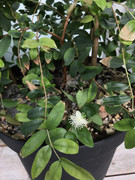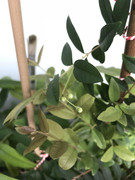26
Temperate Fruit Discussion / Re: Arrayán, Luma apiculata
« on: December 13, 2018, 09:35:32 AM »
Hi Heinrich,
That is a beautiful plant, thank you for sharing your experience with it. I have a Luma Chequen in the ground for the second year now and it has taken -8 last year in a series of 3 nights and 2 days in which the temperature didn't come above 0 Celsius. It didn't flower this year, but it did the first year, and the fruits are sweet and delicious, althoug the seeds are quite large for a beryy to eat, and the skin has some bitterness in it, so I bite them and suck out the pulp and spit out the seeds and skin. It also flowered in June and had fruits ripen in September
I had only one Luma Apiculata, bought here in the Netherlands. That plant flowered continuously and had, as you say always both fruits and flowers on it. It wasn't that cold hardy though, and I lost it two winters ago. The quality of the fruit was very bad, though. Mostly just skin and seeds and biterness. Arven pepiniere in France has made a selection for edibility, they sent me one plant last year, but it didn't survive the post...
http://www.arven-boutique.com/15-litre/451-luma-apiculata-arven-.html
I'll try to get another plant of them next spring, in the hope that it will survive.
Solko
That is a beautiful plant, thank you for sharing your experience with it. I have a Luma Chequen in the ground for the second year now and it has taken -8 last year in a series of 3 nights and 2 days in which the temperature didn't come above 0 Celsius. It didn't flower this year, but it did the first year, and the fruits are sweet and delicious, althoug the seeds are quite large for a beryy to eat, and the skin has some bitterness in it, so I bite them and suck out the pulp and spit out the seeds and skin. It also flowered in June and had fruits ripen in September
I had only one Luma Apiculata, bought here in the Netherlands. That plant flowered continuously and had, as you say always both fruits and flowers on it. It wasn't that cold hardy though, and I lost it two winters ago. The quality of the fruit was very bad, though. Mostly just skin and seeds and biterness. Arven pepiniere in France has made a selection for edibility, they sent me one plant last year, but it didn't survive the post...
http://www.arven-boutique.com/15-litre/451-luma-apiculata-arven-.html
I'll try to get another plant of them next spring, in the hope that it will survive.
Solko

